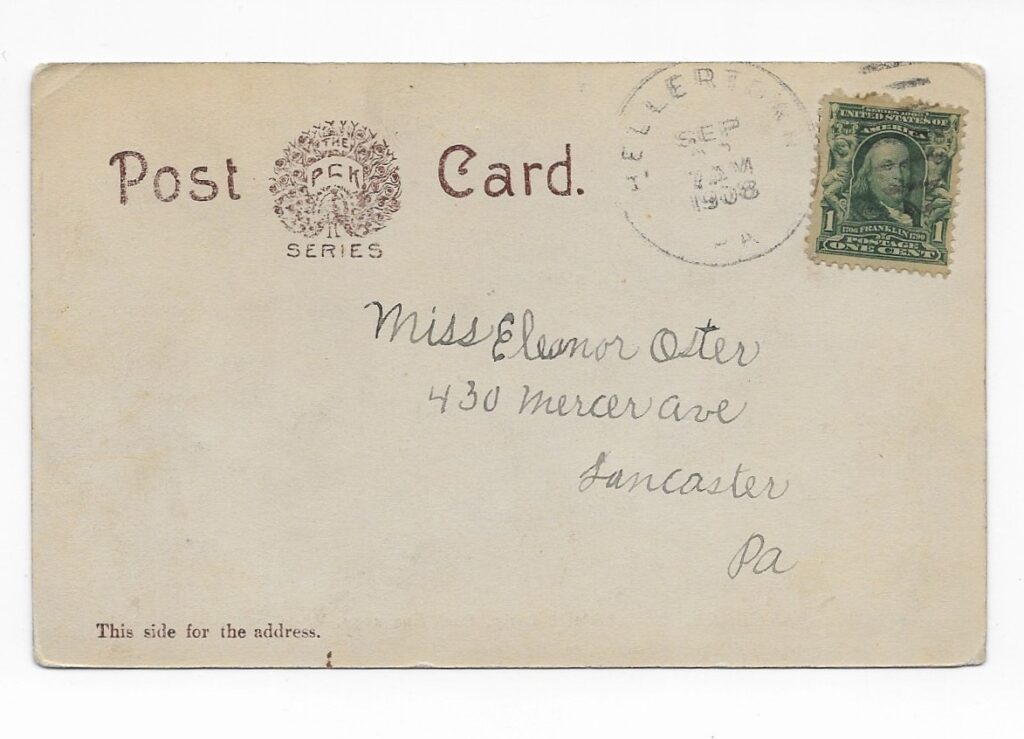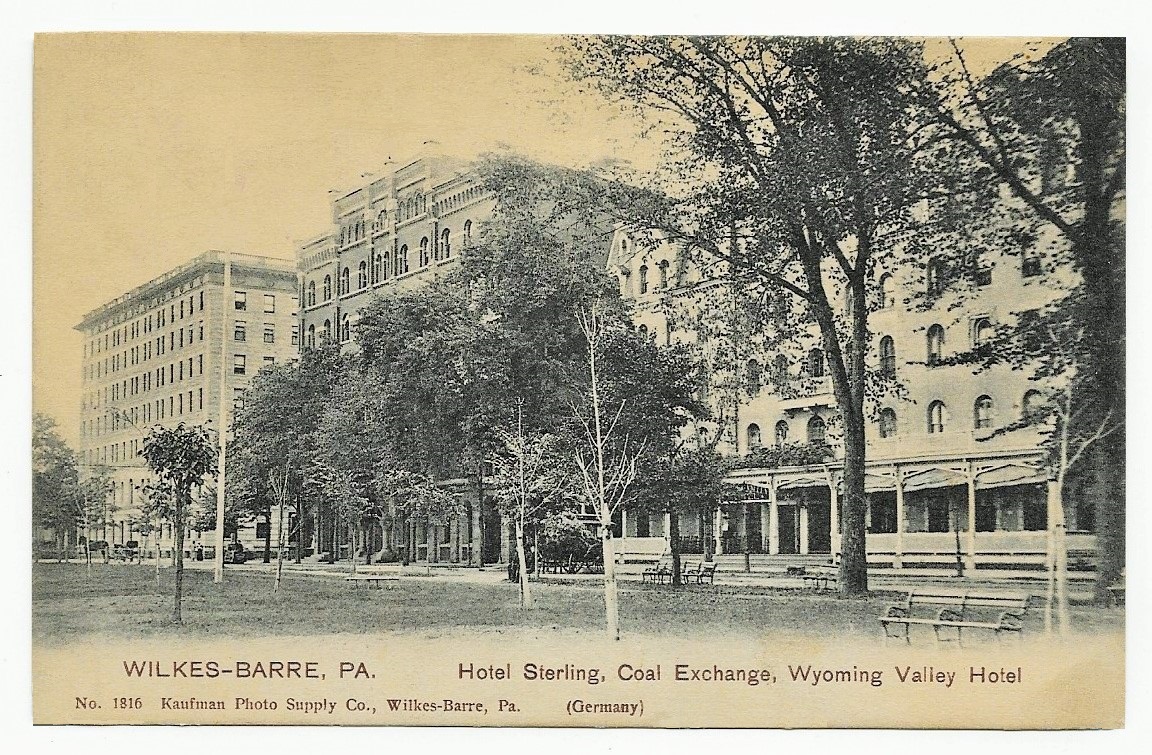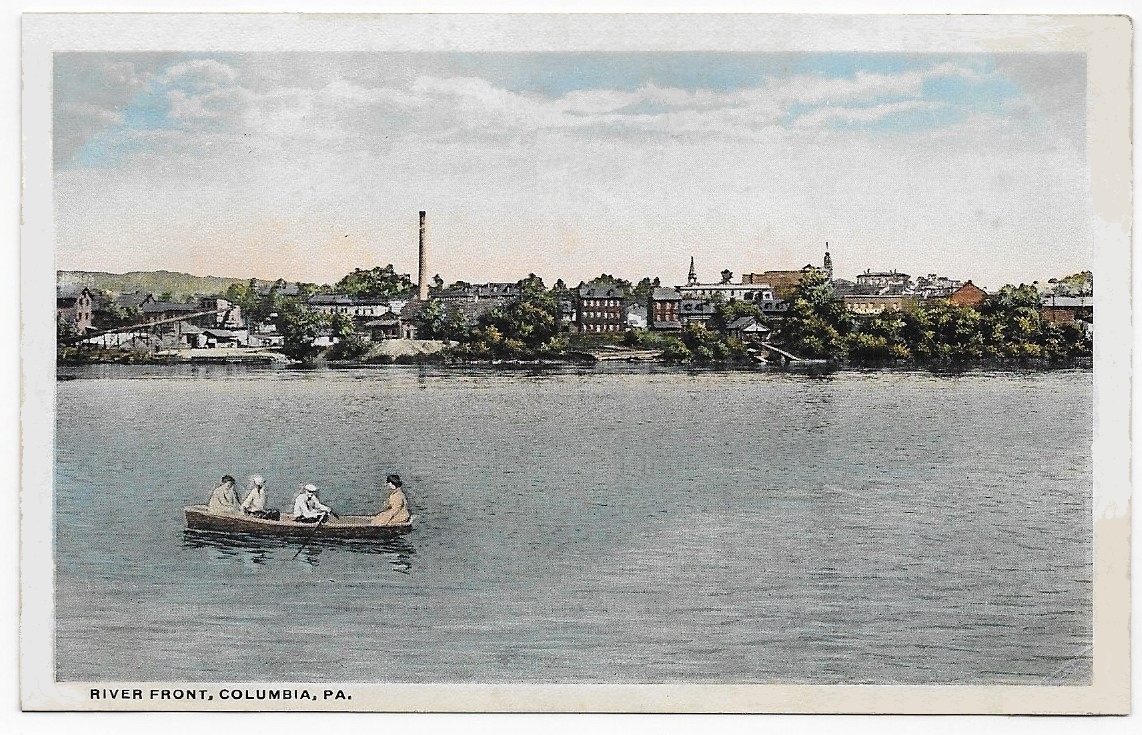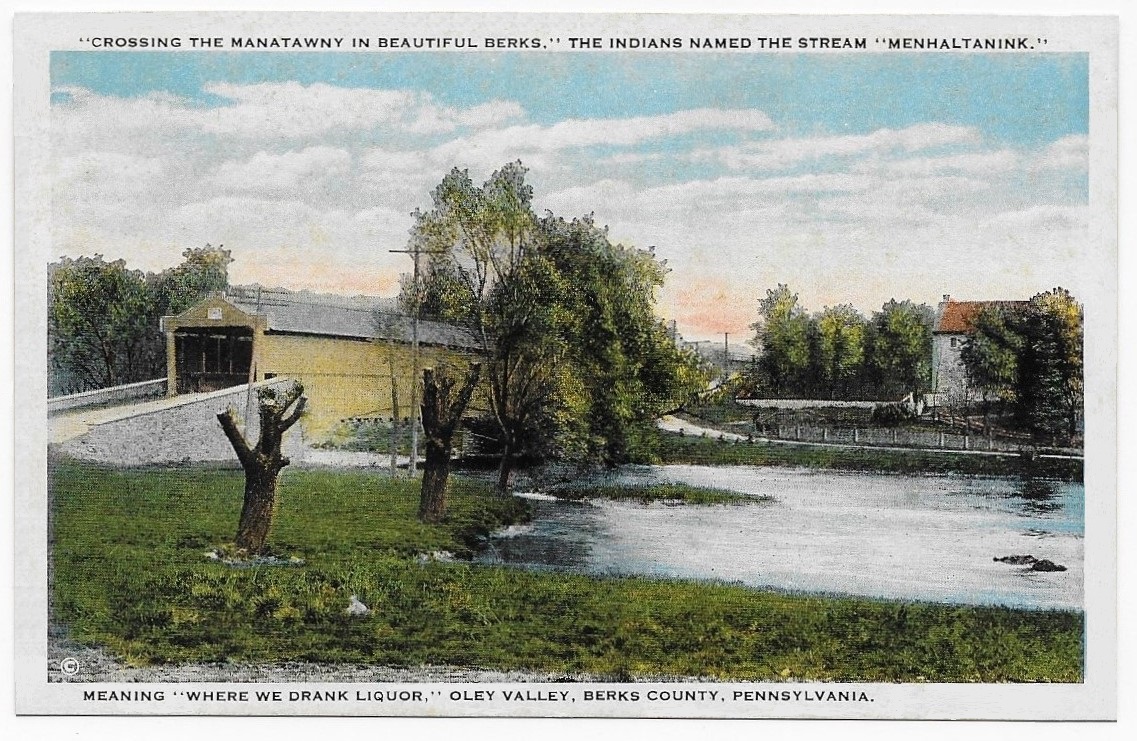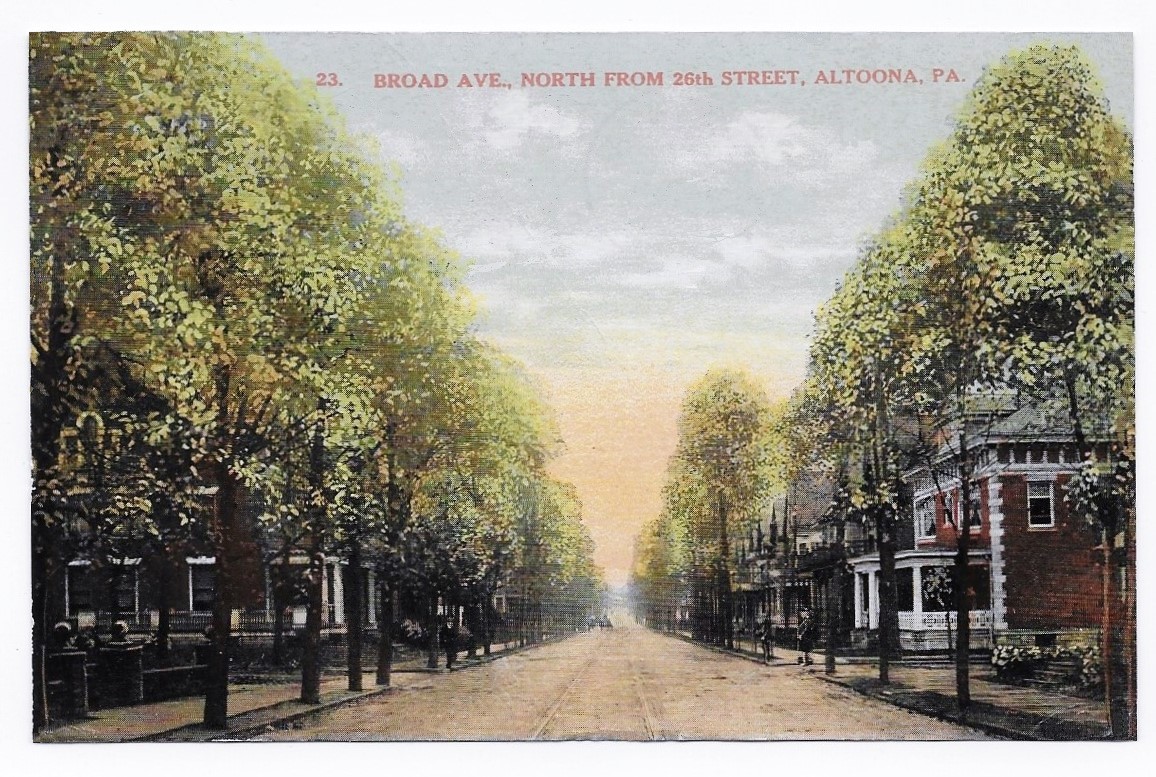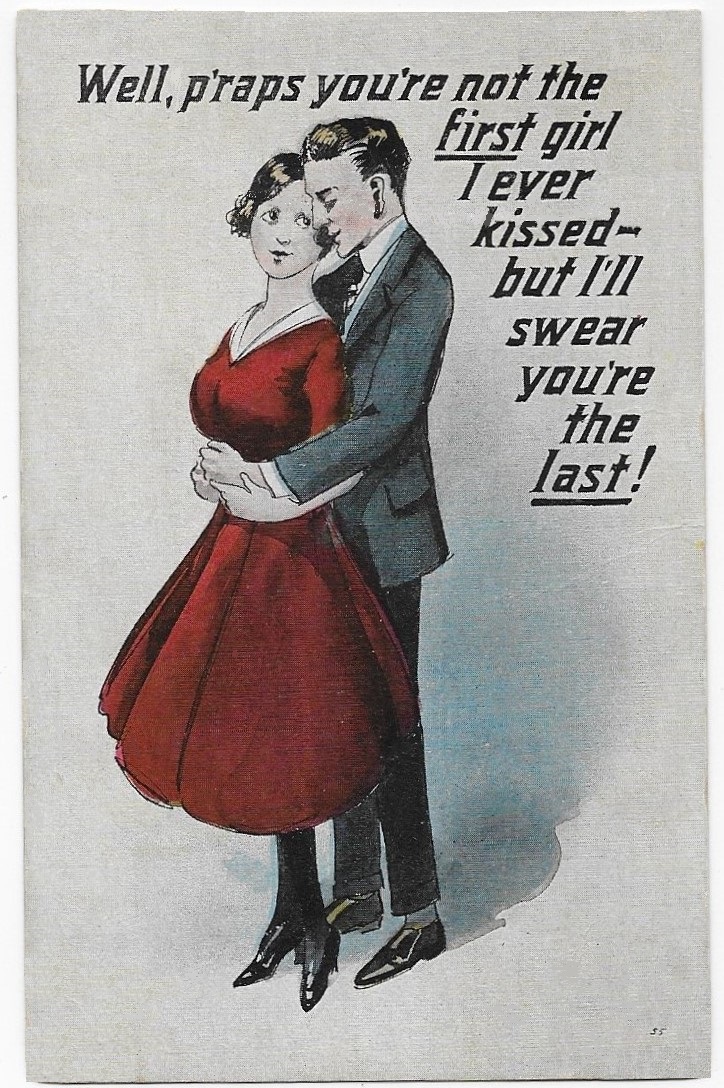Miss Eleanor Oster lived in Lancaster, the lovely and historic city in southeast PA.
https://en.wikipedia.org/wiki/Lancaster,_Pennsylvania
Miss Oster’s residence at 430 Mercer Avenue is no longer standing; this area of southeast Lancaster has been redeveloped and Mercer Avenue has been removed from Lancaster City maps.
In September of 1908, Eleanor received a postcard from an unidentified friend.
The postcard was mailed from Hellertown, a borough in Northampton County of east-central Pennsylvania.
The borough was founded in 1742 by Joseph Heller and his son who emigrated from Germany and arrived in Philadelphia on a ship from Rotterdam.
Hellertown became known for the local production of linseed oil.
In the mid-19th century, the small agricultural community was transformed by the development of coal yards and iron works and the coming of the Northern Pennsylvania Railroad.
https://en.wikipedia.org/wiki/Hellertown,_Pennsylvania
+ + + + + +
The face of the postcard is a photograph of a tree-lined street in Wilkes-Barre, the city on the Susquehanna River in Luzerne County of east-central Pennsylvania.
The first European settlers in Wilkes-Barre arrived from older communities in Connecticut.
Competing territorial claims resulted in armed conflicts before and after the American Revolution – and the matter was not resolved until 1786.
In the 19th century, the city was transformed by the anthracite coal industry which brought enormous prosperity to the region until the mid-20th century.
https://en.wikipedia.org/wiki/Wilkes-Barre,_Pennsylvania
+ + + + + +
In a block of handsome buildings, the Hotel Sterling, the Coal Exchange, and the Wyoming Valley Hotel are identified.
The Hotel Sterling was erected in 1897 on the site of a former music hall.
Designed by local architect, J. W. Hawkins, the seven-story building contained 175 rooms and was furnished according to the expensive taste of the first proprietors.
The elegant hotel opened to great fanfare and became the premier hotel in the region-even incorporating a rival hotel in 1923.
After the Great Depression, the fortunes of the Sterling Hotel diminished and the structure housed a student dormitory, a retirement community, and individual apartments before being razed (in stages) ending in 2011
https://en.wikipedia.org/wiki/Hotel_Sterling
The Wiki article has this postcard photograph of the Hotel Sterling.
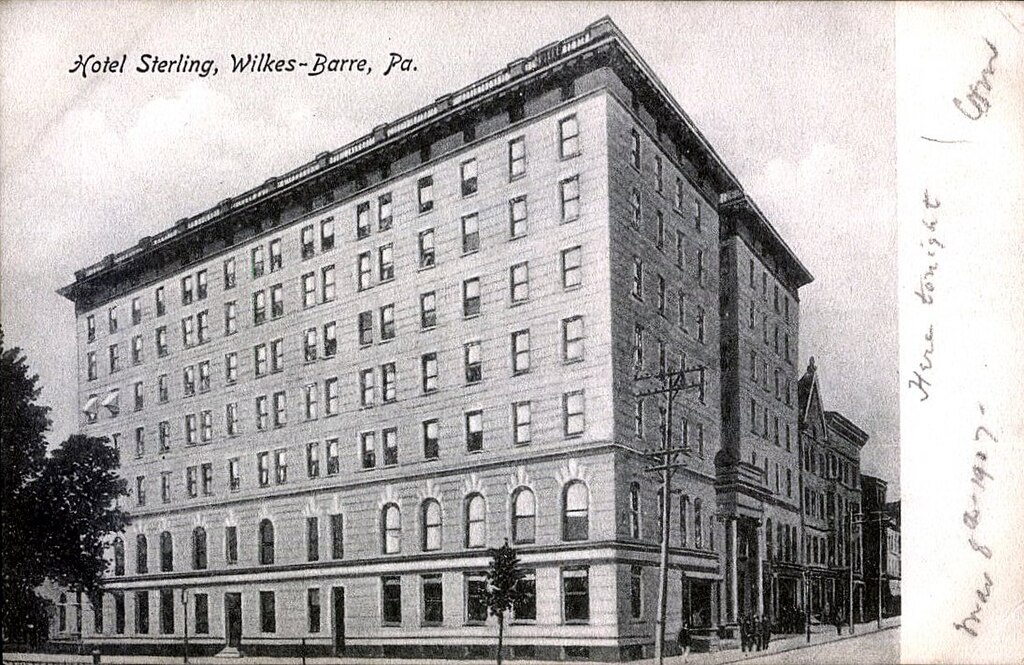
The Coal Exchange building was erected in 1890 and served as a trading platform for product sales and futures investment in the area coal fields.
The building, sometimes called the “Hollenback Coal Exchange”, was erected in 1890 and razed during the Great Depression -in 1937.
This AI-colored image was shared in a Facebook group devoted to the Wyoming Valley..
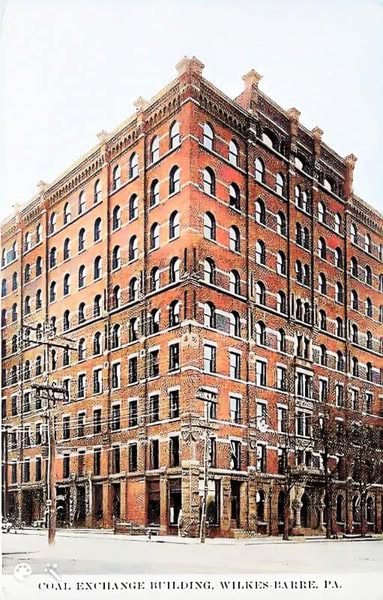
The Wyoming Valley Hotel was erected in 1868, and accommodated many famous figures of the 19th century.
The building is longer than can be shown in the postcard photograph.
Th structure was razed in 1909, only one year after this postcard was mailed.
The construction of the Sterling Hotel, with more amenities and fireproof construction, may have contributed to the demise of the older hotel.
This photograph of the Wyoming Valley Hotel was shared in a Facebook Group devoted to the Wyoming Valley.
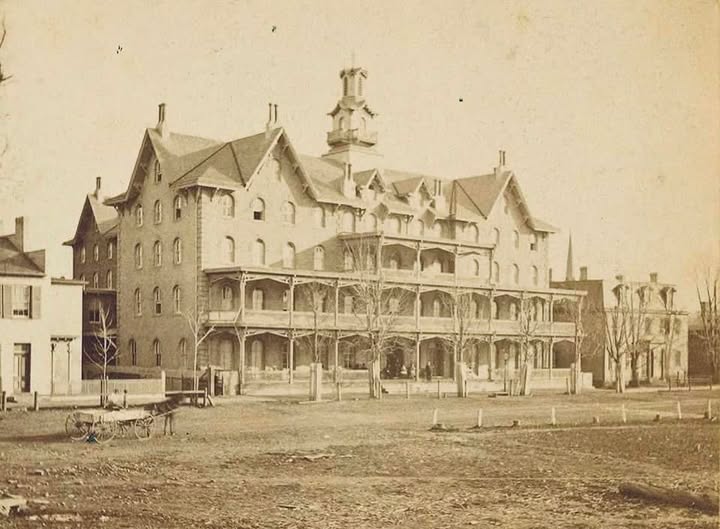
The postcard photograph sent to Miss Oster was published by Kaufman Photo Supply Co. of Wilkes-Barre; it was printed in Germany.
+ + + + + + + +
The postcard was printed a few years earlier than it was mailed; it has an “undivided back” with no space for a message.
We trust that Miss Oster could identify the sender.
It appears that the postcard was valued as it was preserved in very good condition for more than a century.
